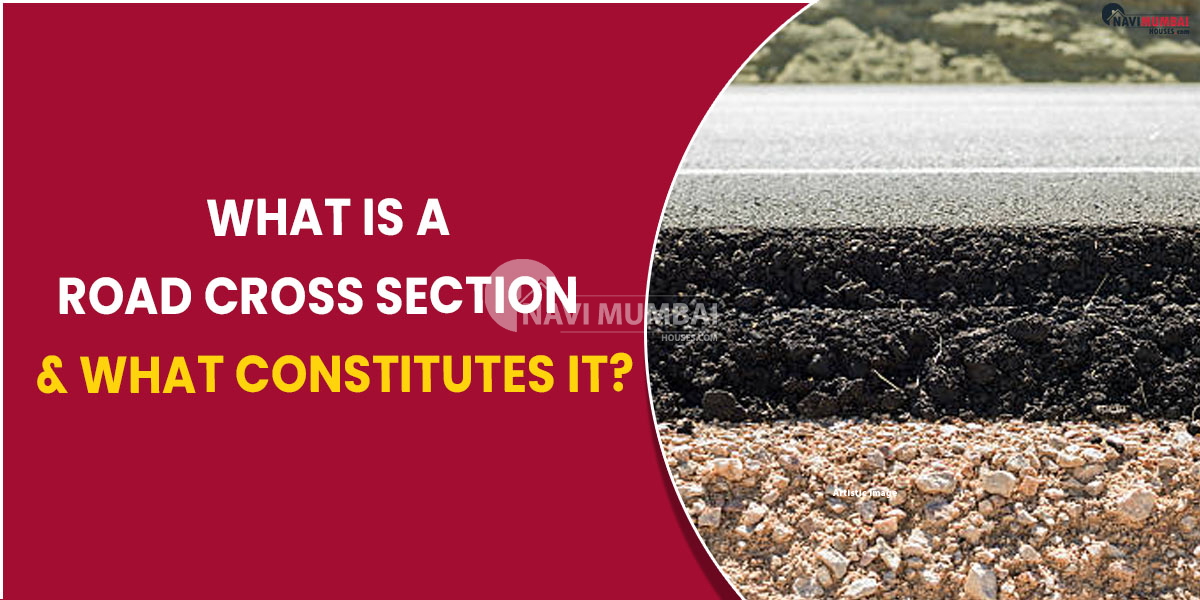
- April 18, 2023
- News
What is a Road Cross Section & What Constitutes It?
The cross-section of roadways is that portion of the road between the outside border of the outer lane of traffic and the inside corner of the ditch, gutter, curb or slope. To promote safety and allow for the expansion of the maximum traffic capacity, shoulders are given.
Are You Looking For Flat in Shelu ?
Road cross-sectional elements
lane width
The width and number of lanes on the surfaced road should be enough to handle the anticipated types and volumes of traffic, implied design speeds of vehicles, and meeting or passing slower traffic. Due to increases in traffic volume, vehicle speed, and truck width, the recommended width for two-lane highways has grown from 16 feet to 24 feet.
Urban lane widths
The typical lane width is at least 3.5 metres. Narrower lanes are utilise for economic or environmental reasons. A two-way local distribution route’s carriageway width can be as short as 6.1 metres when curb parking is banned. In metropolitan locations, the near side lane’s width is typically expand to:
- improve cycling conditions
- Allow additional space for business vehicles.
Rural roads’ width
To boost capacity and reduce accidents, rural roads should have lanes that are 3.65 metres wide. Standard edge treatment on conventional two-lane single carriageways consists of a 1 m strip of the same material on both sides with a solid white line, bringing the overall width to 9.3 m.
Median strips
The median, a part of a divided roadway, separates the lanes into different directions. On split highways, median strops provide effective defence against a collision with opposite cars. The width of these median strips varies from 4 to 60 feet.
Curbs may (or may not) be use when wider spacing is available because, when raise, they only offer narrow middle strips and separation. In rural locations, the large distance frequently serves the purpose on its own, necessitating the absence of a raised barrier. An essential component of a road cross-section is the median.
Shoulders
The cross-section of roads refers to the portion of the road between the outer boundary of the exterior traffic lane and the inner edge of the dump, gutter, curb or slope. To promote safety and allow for the expansion of the maximum traffic capacity, shoulders are given. The shoulder also provides a place for a car to park in case of an emergency, like while changing tyres. Additionally, shoulders provide lateral support for the pavements.
Road chamber
On the transverse section of two- and multi-lane highways without medians, the pavement slopes from the centre to the sides. A cross slope is produce by a road cross-section, which may be curve, planar, or a combination of the two.
For the purpose of allowing rainfall to drain from the surface, cross-slopes are slopes add to the road’s surface in the transverse direction. It is insert in all diversion areas of the road, with the exception of curves, where super altitude guides all water towards the inside.
1 BHK Flat For Sale In Kharghar | Sector 19 | Maitri icon ? 8433959100 ?
You’re looking for Flat in Kalwa , we have the Best Properties In Thane. Like Ready to Move & Nearby possession: https://navimumbaihouses.com/property/search/buy/kalwa/
If you want daily property update details please follow us on Facebook Page / YouTube Channel / Twitter

